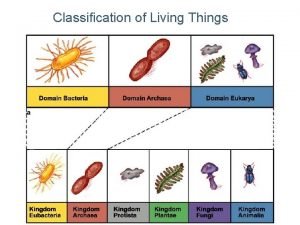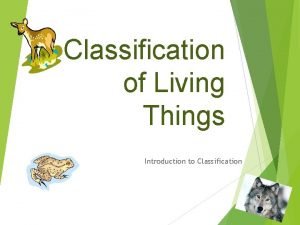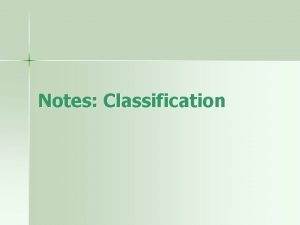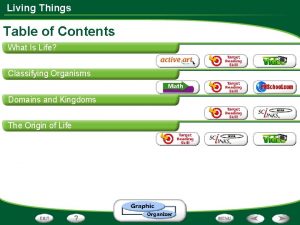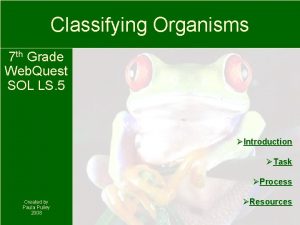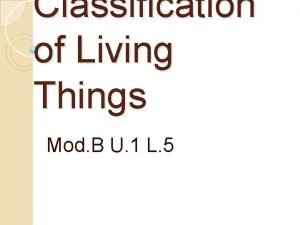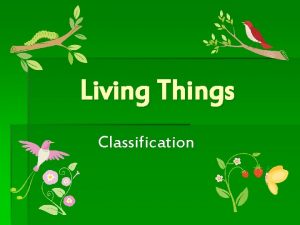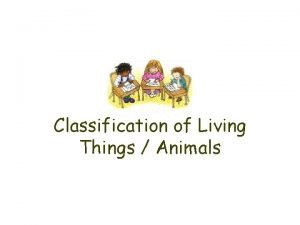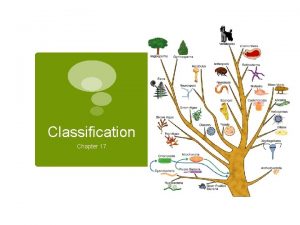Classification Chapter 18 How are living things organized












- Slides: 12

Classification Chapter 18

How are living things organized for study?

Classification § To study the _____ of life, biologists use a classification system to _____ organisms and ______ them in a logical manner § Why? § Common names can be confusing (buzzard) or misleading (starfish) § Taxonomy: discipline of ______organisms and assigning each organism a universally accepted _______ § In science we use ___________, a 2 -part naming system developed by Carolus ______ (1700 s).

Binomial Nomenclature § Rules: § Both words must be in ______ or underlined. § The first letter of the first word (the ____) is _______. § The second word (the _____) is in _________. § Always written in _______ ( language most of English is derived from) § Example §Felis catus

Kingdoms and Domains There are 2 different Systems of Classification: 1) ____________ 1) Monera § Eubacteria § Archaebacteria 2) Protista 3) Fungi 4) Plantae 5) Animalia 2) _______________ (“superkingdoms”) 1) Archaea 2) Bacteria 3) Eukarya

Classification System § Linnaeus created a classification system based on organism’s _____ and ______. § He created 7 _____ (classification “groups”, domain added later) from _____ to most specific: Domain Kingdom Phylum Class Order Family Genus Species § Dumb Kings Play Cards On Fat Green Stools

Brown Squirrel § Kingdom: _______ (“is an animal”) § Phylum: Chordata (“has a spine”) § Class: ______ (“nurses its young”) § Order: Rodentia (“has long sharp front teeth”) § Family: ______ (“has a bushy tail”) § Genus: Tamiasciurus (“climbs trees”) § Species: _________ (“has brown fur on its back and white fur on its underparts”)

How do we determine how similar or how dissimilar certain organisms are?

Cladistics § Cladistics is one method of _________phylogenies (how they are related) based on _______ traits. § Patterns of ______ characteristics § _______ traits are new characteristics that arise as lineages evolve over time. § These derived traits are displayed on a cladogram. § Shows the ________ relationships among a group of organisms

Cladogram

DICHOTOMOUS KEY § A tool used to identify ______ or ________. § A list of characteristics become more _______ as they describe the particular item of interest. § Forced-choice selection between two characteristic options § Follow directions next to characteristic until you get to a species (like “choose your own path books”)

 Mikael ferm
Mikael ferm How living things are organized
How living things are organized Venn diagram of living things and nonliving things
Venn diagram of living things and nonliving things Mitochondria information
Mitochondria information How to remember the 7 life processes
How to remember the 7 life processes Why do we classify things
Why do we classify things Genus and species difference
Genus and species difference Domain kingdom phylum mnemonic
Domain kingdom phylum mnemonic Thampi's torrent frog
Thampi's torrent frog Classification of living things notes
Classification of living things notes Classification of living things table
Classification of living things table Unscramble classify
Unscramble classify The 8 levels of classification
The 8 levels of classification





